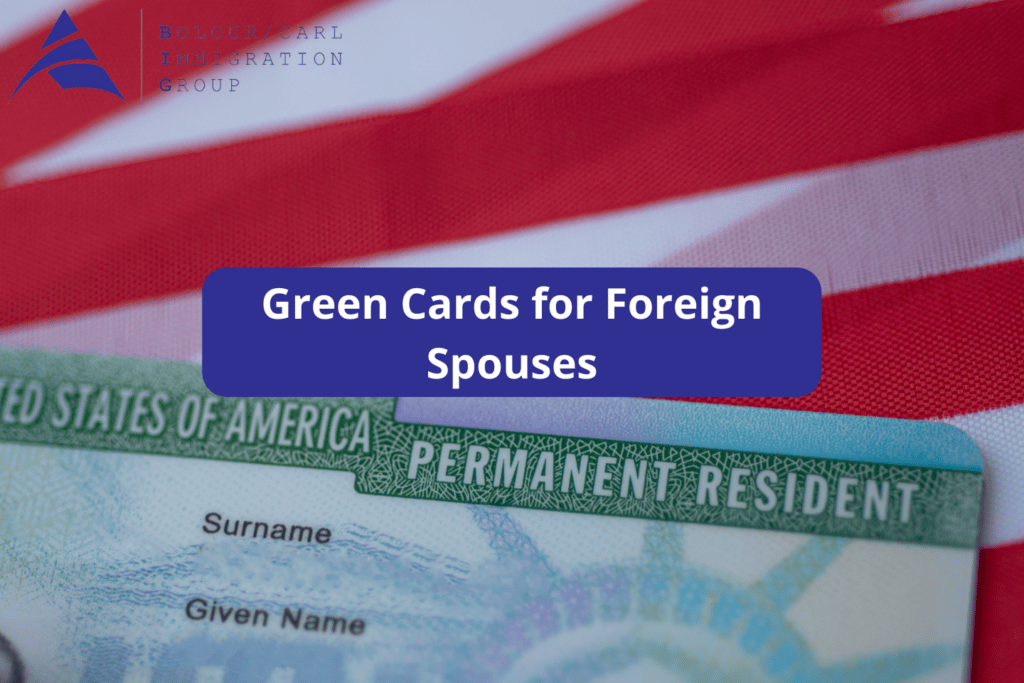
If you are a U.S. citizen or legal permanent resident and your spouse lives outside the United States, you can apply for a green card for your spouse through a three-step process. Below is a breakdown of the steps and the time frames, which can vary based on several factors. It’s a complex, lengthy application process, and you can avoid unnecessary delays and denials by working with an experienced family-based green card lawyer to submit a thorough, accurate application the first time.
Step 1: File Form I-130 with USCIS
Your first step is to file Form I-130, Petition for Alien Relative, along with supporting documents, with United States Citizenship and Immigration Services (USCIS) and pay the filing fee.
The main purpose of this step is to establish that a bona fide marriage exists between you and your spouse. In addition to supplying a copy of your marriage certificate, you will need to provide supporting evidence that your marriage is genuine, such as joint bank accounts or documents showing joint property ownership; wills or other financial documents that list your spouse as the beneficiary; wedding and honeymoon photos; travel itineraries of your honeymoon or other trips you have taken together; and sworn affidavits by friends and family members who can attest to your relationship. If you have a child together, submit the birth certificate or adoption record indicating both of your names as parents. Note that if either of you was married previously, you will need to submit evidence that the prior marriage ended, such as a divorce or death certificate. Your application must also contain proof that you are a U.S. citizen or permanent resident, such as a copy of your unexpired U.S. passport or green card.
USCIS will confirm receipt of your petition within a few weeks. If your application was filed incorrectly or is incomplete, USCIS will either notify you that it is rejected or that more evidence is required. Your receipt notice will include a case number, which you can input on the USCIS Case Status Online page to check your status. Processing times vary based on which USCIS field office is processing your application and whether you are a U.S. citizen or green card holder. As with most other visa services, the pandemic has significantly increased the amount of time it takes to process an I-130 petition. Currently, processing times average about 10 to 16 months for U.S. citizens and 21 to 37 months for permanent residents.
Step 2: Work with NVC
Upon approval by USCIS, your petition will be transferred to the Department of State’s National Visa Center (NVC), which will notify you once an immigrant visa is available for your spouse. Immigrant visas are unlimited and automatically available for the spouses of U.S. citizens. But immigrant visas for spouses of U.S. green card holders are limited and may not be immediately available.
In addition to submitting visa application fees to the NPV, your spouse must file Form DS-260, Online Application for Immigrant Visa and Alien Registration. In addition, you as the sponsor must submit Form I-864, Affidavit of Support, agreeing to use your resources to support your spouse, if necessary, along with evidence of your financial capability to do so.
The NPV is currently taking about three months to review immigrant visa applications.
Step 3: Consular Processing
Next, your spouse will be contacted for an interview in a U.S. consular office in his or her country of residence. It generally takes one to two months to get an interview, but it could be longer depending on the location. The consular office will make the final decision about whether your spouse is eligible for a green card and, if so, will present your spouse with a visa packet. Your spouse should pay the processing fee online before departing for the United States and present the unopened visa packet to a U.S. Customs and Border Protection officer upon arrival.
Receive the Green Card
Your spouse should receive his or her green card in the mail within about 45 days of arrival in the United States. Note that if you were married for less than two years when permanent resident status was granted, your spouse will receive a conditional green card, which is valid for two years. You and your spouse will need to apply together to remove the conditions on permanent residence before the expiration date. Upon successfully removing the conditions, your spouse will receive an unconditional green card, which is renewable every 10 years.
Working with an experienced attorney can help ensure that you avoid some of the common pitfalls that can lead to application delays or denials. To speak to a family-based green card lawyer, contact Bolour/Carl Immigration Group at 323-857-0034 or [email protected].




